Beer belly and love handles bothering you? Stick to these 6 exercises and see a visibly slimmer waist in just 4 weeks
Are you troubled by stubborn fat on the sides of your lower belly, or struggling to get rid of a noticeable beer belly?
Excess waist circumference affects more than just your appearance — it can also lead to various health issues, especially cardiovascular problems and conditions like high blood pressure, high blood sugar, and high cholesterol. This increases the risk of death and may even shorten your life expectancy.

If you want to lose belly fat and get a flatter stomach, you need to make real changes—instead of just talking about it every day while still drinking milk tea, eating fried chicken, and barely walking more than 3,000 steps a day.
The key to losing weight is reducing body fat. No matter which area you're targeting, you need to approach it from both diet and exercise. Only by combining the two can you achieve better and longer-lasting results.

When it comes to exercise, many people find that simple jogging can help boost activity metabolism and reduce overall body fat percentage. However, the stubborn fat around the waist and abdomen is often difficult to get rid of, and after losing weight, the belly can still appear loose and untoned.
Compared to jogging alone, I recommend combining aerobic and anaerobic exercises. This type of training not only burns fat at a higher intensity but also builds muscle, helping to sculpt your figure and define your abdominal lines.
Today, I’m sharing a set of bodyweight exercises perfect for home workouts. They’re highly effective for fat burning and shaping, and in just 4 weeks, you can shrink your belly and restore a firm, toned stomach—much more efficiently than jogging.
Exercise 1: Jumping Jacks
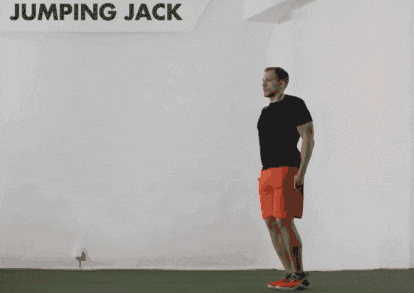
Key Points for the Exercise:
Start in a standing position with your arms relaxed at your sides. As you jump, spread your legs to about 1.5 times shoulder-width apart and clap your hands overhead. Engage your transverse abdominis (deep core muscles) to increase core activation. Perform this movement for 1 minute, repeating 4 sets.
Exercise 2: Mountain Climbers
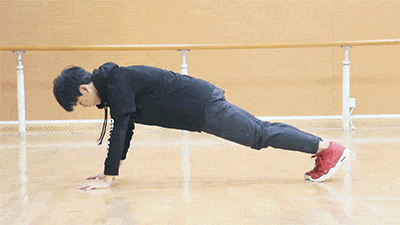
Key Points for the Exercise:
Start in a high plank position with your legs extended straight. Alternate bringing your knees toward the opposite elbows, aiming to touch the knee to the opposite arm to engage the obliques. Keep your hips lower than shoulder height to avoid lumbar compensation. Perform this movement for 30 seconds, completing 4 sets.
Exercise 3: Lunge with Torso Twist
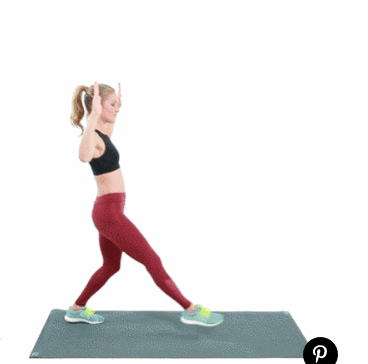
Key Points for the Exercise:
Start in a standing position. Step forward into a deep lunge, shifting your weight onto the heel of your front foot. Lower your body until your front thigh is parallel to the ground and your back knee hovers about 1 cm above the floor to maintain constant tension. While in the lunge position, twist your torso to the left and right to engage the core muscles.
Exercise 4: High Knees
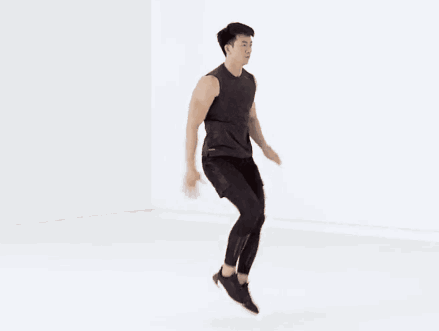
Key Points for the Exercise:
Start in a standing position. Alternate lifting your knees as high as possible while engaging your core muscles. Keep your chest up and back straight—don’t hunch your shoulders. Raise your thighs until they're parallel to the ground (hip flexion at 90°). Extend both arms forward with palms facing down, and aim to tap your knees to your palms with each lift.
Exercise 5: Kneeling Push-Ups
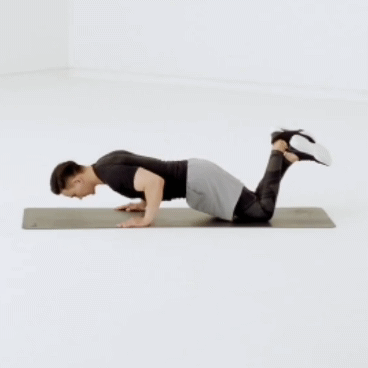
Key Points for the Exercise:
Cross your lower legs and kneel on the ground with your knees. Place both hands on the floor to support your upper body, maintaining a push-up position. Slowly bend your elbows from a straight-arm position to lower your body. Inhale as you descend and engage your core by drawing in your abdomen (ribs pulled inward).
Exercise 6: Jump Rope

Key Points for the Exercise:
Start in a standing position with your core engaged. Hold the rope handles with your arms close to your sides, keeping your upper arms still. Use your wrists to turn the rope while gently jumping just enough to let the rope pass under your feet. Only the toes should leave the ground slightly. Jump rope for 1 minute, repeat for 4 sets.
In terms of diet, here are a few important tips to follow:
Limit the intake of high-sugar and high-fat foods. Try to restrict social meals, milk tea, fried chicken, and late-night snacks to no more than once a week. Eat three regular meals a day to better control your calorie intake.
Increase your vegetable intake. Consume at least 400 grams of leafy greens, mushrooms, and cruciferous vegetables daily. Keep your carbohydrate portion to about one fist per meal. Choose lean, high-protein options like chicken breast, fish, tofu, and shrimp to replace fatty meats like beef belly or pork fat.
Adopt a light diet. Keep your daily cooking oil intake to 20–25 grams, and salt intake to no more than 5 grams. Drink at least 1500 ml of water daily, spread across multiple time periods, to help suppress hunger.
